Tesla Motors Inc (NASDAQ: TSLA) has experienced one of the fastest and most incredible growths in the history of the market. In recent years, revenues for the company have been propelled sky high as well as its stock price.
However, one of the most important and concerning issues that Tesla faces is this: profitability. Tesla could stand to make some improvements in that department, given the cutbacks on the company’s yearly expectation. The company could even use some help regarding non-GAAP figures. There are plenty of reasons for Tesla and investors to be worried about this question.
Tesla Outperformed in Q2
A few weeks ago when Tesla posted its earnings report for the second quarter of 2014, it blew away analysts’ expectations by a huge margin. The electric car company reported over $857 million in revenue, high above the estimation for $810 million. The company also posted non-GAAP earnings per share of $0.11, which crushed the estimated $0.04 earnings per share.
While these numbers are impressive, Tesla did lower its expectations for the second quarter when it announced results for the first quarter. For example, the expectations for the second quarter were $0.04, and Tesla beat that figure with $0.11. However, in the first quarter, Tesla estimated that it would reach $0.27 earnings per share. Additionally, about two weeks before the release of the quarterly report, analysts were estimating about $0.06 earnings per share. Tesla’s lowered estimations caused EPS predictions to drop by more than 85% from the first quarter report to the second quarter report. Thus, the $0.11 is not as impressive as it seems, and we once again return to the issue of profitability.
Long Term Estimate Changes
The issue of profitability extends beyond a single quarter. The second quarter was one part of the problem, and it is necessary to grasp the whole picture by looking at a longer period of time.
The revenue estimates for 2014 from the third quarter of 2013 have continuously increased, and current revenues are beating those estimations. On the other hand, earnings per share estimations have dropped from the third quarter of 2013, the most recent estimation being the lowest yet at $1.08.
Tesla also announced a shutdown during the third quarter of its factory in Fremont that will affect deliveries, which has not helped EPS. Since then, analysts have pulled back their enthusiasm for their third quarter estimates. Tesla will probably beat expectations for the next quarter, but taking everything into consideration, it would not be that impressive.
What Is Causing The Concern About Profitability?
In the following chart, you can see financial data from the first six months of 2013 and 2014:
The silver lining in this chart is that the company’s gross profit has grown nicely. Tesla is also in the process of improving its gross margins as well. However, the company’s operating expenses are too high to improve profitability – its operating expenses are increasing at a rate that is nearly twice that of its increase in revenue. Additionally, the company’s interest expense doubles as well, thus causes its GAAP net loss to increase or its non-GAAP net income to drop. Additionally, Tesla estimated another 20% increase in R&D expenses and an increase of 15% for SG&A Expenses for the third quarter of this year. Both these expenses will probably rise faster than revnues.
The Increased Share Count
The following chart shows the increase in the number of shares outstanding since the third quarter of 2010.
In the second quarter of 2014, the number of outstanding shares grew by almost 550,000 shares. So far in 2014, the number has increased by nearly 1.5 million shares. This is pretty normal for a growth company, especially when executives are paid via stock options. However, from the third quarter of 2010, the number of shares has increased by over 31 million, almost 34%. The rise in share count makes it especially difficult to increase earnings per share.
In regards to non-GAAP, the share count that was used to calculate EPS in the last quarter was 140.95 million. The second quarter one year ago used 130.5 million as the number of shares to calculate EPS. Last quarter non-GAAP net income was about $16.1 million, while last year it was $26.2 million. These two factors are why non-GAAP EPS dropped to $0.11 this year from $0.20 last year.
Conclusion
While Tesla has been continuously outperforming analysts’ estimates, those estimates were brought down by Tesla’s own conservative predictions. In regards to the bottom line, the electric car manufacturer must being to show some signs of improvement. While revenue estimations are rising, EPS estimates are falling – this is mostly a result of the quickly rising operating expenses as well as the rising number of outstanding shares. Tesla is already making moves to get those costs under control with the construction of its Gigafactory, which will reduce battery costs in the future. However, the company still needs to reign in its other costs. Tesla’s current valuation, which is 5.5 times the expected sales and 80 times the estimated EPS for 2015, cannot hope to maintain its elevation if the company doesn’t do something about its profitability.

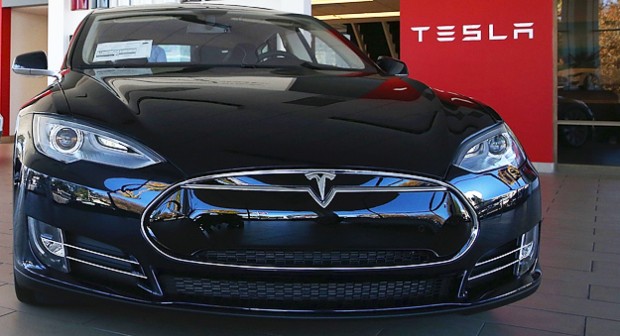
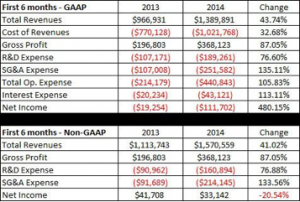
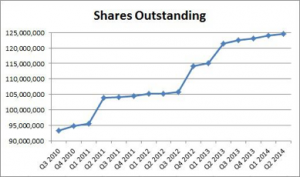
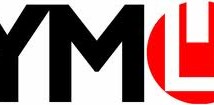

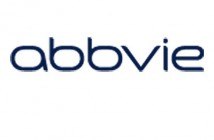
Pingback: viagra dosage
Pingback: cialis price walmart
Pingback: cialis super active
Pingback: Viagra in usa
Pingback: canadian pharmacy cialis
Pingback: cialis price walmart
Pingback: buying cialis cheap
Pingback: viagra 50mg
Pingback: best erection pills
Pingback: medicine erectile dysfunction
Pingback: ed medication
Pingback: pharmacy online
Pingback: Buy cialis online
Pingback: levitra online
Pingback: vardenafil 20 mg
Pingback: vardenafil 20mg
Pingback: online casino usa real money
Pingback: win real money online casino for free
Pingback: natural viagra
Pingback: best real casino online
Pingback: best online casino usa
Pingback: tadalafil 20
Pingback: payday loans
Pingback: personal loan
Pingback: payday loans
Pingback: viagra pills
Pingback: cialis generic
Pingback: cialis 20
Pingback: real blackjack app iphone
Pingback: https://best-casinos-usa.com/
Pingback: casinos in usa
Pingback: cialis generic
Pingback: online casinos
Pingback: cialis 5 mg
Pingback: cialis 20
Pingback: cialis 5 mg
Pingback: viagra online pharmacy
Pingback: online casinos real money
Pingback: casino online real money
Pingback: best real casino online
Pingback: online casino real money
Pingback: viagra without a doctor prescription
Pingback: viagra generic name
Pingback: viagra for sale
Pingback: generic viagra 100mg
Pingback: best place to buy cialis online reviews
Pingback: viagra alternative
Pingback: buy viagra now
Pingback: cialis generic
Pingback: purchase viagra online
Pingback: buy cialis online
Pingback: buy cialis online
Pingback: buy viagra no prescription
Pingback: canadian online pharmacy cialis
Pingback: casino games win real money
Pingback: vegas casino online
Pingback: buy viagra online overseas
Pingback: online viagra
Pingback: where can you buy viagra without prescription
Pingback: cialis online no prescription
Pingback: is it illegal to buy viagra online in canada
Pingback: where can i buy cheap cialis
Pingback: buy hydroxychloroquine
Pingback: generic cialis online
Pingback: order viagra
Pingback: viagra generic
Pingback: generic viagra cost
Pingback: grassfed.us
Pingback: cialis online
Pingback: buy viagra
Pingback: cheapest generic viagra
Pingback: buy viagra online
Pingback: viagra cheap
Pingback: cheap cialis
Pingback: viagra de
Pingback: cialis spray
Pingback: buy viagra professional
Pingback: keflex.webbfenix.com
Pingback: ebay cialis
Pingback: cialis side effects
Pingback: buy cialis singapore
Pingback: natural viagra
Pingback: generic viagra mastercard
Pingback: catapres 100mcg tablets
Pingback: ceclor 500mg without a prescription
Pingback: celebrex 200 mg without a doctor prescription
Pingback: celexa united kingdom
Pingback: online pharmacy viagra
Pingback: where to buy cephalexin 500mg
Pingback: viagra vs cialis
Pingback: how to purchase claritin
Pingback: online casino games for real money
Pingback: betfair casino online nj
Pingback: real money casino games
Pingback: online casinos real money
Pingback: casino slots gambling
Pingback: real money online casino
Pingback: online slots real money
Pingback: vegas casino online
Pingback: gambling casino online
Pingback: safecar insurance
Pingback: insurance quote car
Pingback: viagra in nigeria
Pingback: car insurance quotes online
Pingback: access car insurance
Pingback: auto club insurance
Pingback: automobile insurance
Pingback: multiple car insurance quotes
Pingback: online payday loans
Pingback: payday loans online
Pingback: installment loans lancaster ca
Pingback: how long does it take for a 100mg viagra to kick in?
Pingback: same day quick loans
Pingback: online payday loans
Pingback: Free viagra sample
Pingback: cbd oil for sale online and reviews
Pingback: charlotts web cbd oil for sale
Pingback: cbd oil legal in all 50 states
Pingback: best full spectrum cbd oil
Pingback: cbd oil for pain - cbd pure
Pingback: cbd oil for pain
Pingback: viagra shelf life
Pingback: term paper writers
Pingback: cheap essay writing service us
Pingback: money cannot buy happiness essay
Pingback: french homework
Pingback: my homework help
Pingback: write my essay service
Pingback: essay writing service online
Pingback: cleocin tablet
Pingback: cheap clomid 100 mg
Pingback: clonidine 0,1mg online
Pingback: clozaril 25mg purchase
Pingback: colchicine 0,5 mg coupon
Pingback: Buy now viagra
Pingback: ingredients in cialis
Pingback: symbicort inhaler 160/4,5 mcg canada
Pingback: how to buy combivent 50/20mcg
Pingback: coreg for sale
Pingback: compazine tablet
Pingback: cheap coumadin 5 mg
Pingback: viagra availability in delhi
Pingback: cymbalta 60 mg nz
Pingback: dapsone 1000caps prices
Pingback: Best price for generic viagra
Pingback: buy depakote
Pingback: diamox without a prescription
Pingback: doxycycline 100mg cheap
Pingback: dramamine over the counter
Pingback: erythromycin 250 mg tablet
Pingback: etodolac tablet
Pingback: flomax prices
Pingback: cost of flonase nasal spray
Pingback: garcinia cambogia caps united states
Pingback: geodon 40 mg over the counter
Pingback: where can i buy hyzaar
Pingback: imdur 20 mg without prescription
Pingback: imitrex tablets
Pingback: imodium united kingdom
Pingback: imuran no prescription
Pingback: indocin pills
Pingback: lopid 300mg price
Pingback: lopressor 25mg without a doctor prescription
Pingback: cost of luvox 50 mg
Pingback: macrobid tablets
Pingback: meclizine 25mg united kingdom
Pingback: prescription refill log
Pingback: mestinon 60mg online pharmacy
Pingback: micardis 20 mg price
Pingback: mobic price
Pingback: motrin pills
Pingback: viagra paypal checkout
Pingback: nortriptyline tablet
Pingback: periactin australia
Pingback: phenergan pills
Pingback: plaquenil 400mg for sale
Pingback: buy prednisolone 5 mg
Pingback: south dakota hydroxychloroquine update
Pingback: proair inhaler online
Pingback: order proscar
Pingback: provigil medication
Pingback: remeron no prescription
Pingback: houston doctor hydroxychloroquine
Pingback: risperdal 3 mg for sale
Pingback: rogaine 5% pills
Pingback: where can i buy singulair 5 mg
Pingback: skelaxin 400mg canada
Pingback: thorazine united states
Pingback: vantin usa
Pingback: verapamil 40 mg for sale
Pingback: voltaren online pharmacy
Pingback: wellbutrin 150 mg pharmacy
Pingback: buy cialis daily use online
Pingback: zanaflex 4 mg coupon
Pingback: zestril australia
Pingback: how to buy zithromax 250mg
Pingback: article
Pingback: zocor united states
Pingback: viagra cost in india
Pingback: zyprexa purchase
Pingback: where can i buy zyvox 600mg
Pingback: sildenafil online pharmacy
Pingback: tadalafil over the counter
Pingback: escitalopram otc
Pingback: aripiprazole 20 mg without a doctor prescription
Pingback: pioglitazone 30mg generic
Pingback: spironolactone prices
Pingback: buy fexofenadine
Pingback: glimepiride medication
Pingback: meclizine online
Pingback: donepezil online pharmacy
Pingback: anastrozole online pharmacy
Pingback: irbesartan cheap
Pingback: olmesartan 40 mg pills
Pingback: buy clonidine 0.1 mg
Pingback: cheap cefuroxime
Pingback: celecoxib 200 mg coupon
Pingback: cephalexin 500 mg usa
Pingback: where to buy loratadine
Pingback: clindamycin 300 mg cheap
Pingback: clozapine 100 mg nz
Pingback: buy viagra over counter singapore
Pingback: prochlorperazine otc
Pingback: carvedilol for sale
Pingback: warfarin pharmacy
Pingback: how to purchase rosuvastatin 20mgrosuvastatin without a prescription
Pingback: divalproex prices
Pingback: cheap trazodone 50mg
Pingback: tolterodine tablets
Pingback: best site for generic tadalafil
Pingback: acetazolamide prices
Pingback: fluconazole 150 mg generic
Pingback: oxybutynin 5mg united states
Pingback: bisacodyl cost
Pingback: can i drive to canada and buy viagra in person
Pingback: venlafaxine without a prescription
Pingback: amitriptyline without a prescription
Pingback: permethrin 30g without a doctor prescription
Pingback: 141genericExare
Pingback: erythromycin 500 mg online
Pingback: 141generic2Exare
Pingback: estradiol tablet
Pingback: alendronate 70 mg cost
Pingback: nitrofurantoin 100 mg australia
Pingback: hoe werkt cialis
Pingback: glipizide 10mg australia
Pingback: isosorbide usa
Pingback: canada pharmacy tadalafil online
Pingback: how to buy sumatriptan 25 mg
Pingback: loperamide 2mg tablet
Pingback: cialis online
Pingback: viagra for sale in ireland
Pingback: cheap lamotrigine 50 mg
Pingback: levothyroxine mcg medication
Pingback: atorvastatin cost
Pingback: augmentin 1000 mg price in india
Pingback: furosemide 50 mg price
Pingback: stromectol ivermectin tablets
Pingback: where can i buy gemfibrozil 300 mg
Pingback: metoprolol 25mg nz
Pingback: clotrimazole 10g pharmacy
Pingback: doxycycline and dairy
Pingback: prednisolone canine dose
Pingback: clomid cheap online
Pingback: sildenafil dapoxetine combination
Pingback: diflucan pills
Pingback: tadalafil 20mg price in usa
Pingback: hydroxychloroquine buy online uk
Pingback: viagra original use
Pingback: topical propecia
Pingback: where can i buy generic cialis
Pingback: current availability of hydroxychloroquine
Pingback: cheap neurontin online
Pingback: metformin diarrhea prevention
Pingback: paxil 20mg
Pingback: plaquenil sulfa allergy
Pingback: sildenafil online australia
Pingback: is tadalafil generic
Pingback: cialis online nz
Pingback: what is cephalexin prescribed for
Pingback: drug furosemide 20 mg
Pingback: cat antibiotics without pet prescription
Pingback: best mens tinder bios
Pingback: pof 100 free dating site
Pingback: free dating site in uae
Pingback: completely free asian dating site
Pingback: free dating websites in europe
Pingback: best dating sites free messaging
Pingback: search free dating sites
Pingback: okcupid login free online dating
Pingback: absolutely free dating sites
Pingback: e dating for free
Pingback: free dating for married
Pingback: free dating usa
Pingback: free jewish local dating
Pingback: free virtual dating games
Pingback: keto bread aldi
Pingback: keto smoothies
Pingback: keto coleslaw
Pingback: ivermectin brand name
Pingback: pfizer viagra
Pingback: buy ivermectin for scabies
Pingback: ivermectin lotion cost
Pingback: cost of ivermectin medicine
Pingback: where can i buy ivermectin
Pingback: buy generic cialis
Pingback: furosemide tab 80 mg
Pingback: ivermectin buy
Pingback: tadalafil mylan
Pingback: cialis 10
Pingback: cialis website
Pingback: where to buy cialis over the counter
Pingback: ivermectin india
Pingback: how to purchase sildenafil pills
Pingback: cheap tadalafil
Pingback: generic cialis
Pingback: best liquid tadalafil
Pingback: prednisone 20mg nebenwirkungen
Pingback: prednisone 20mg vidal
Pingback: merck antiviral covid
Pingback: cialis
Pingback: ivermectin to buy
Pingback: viagra erection
Pingback: side effects prednisone
Pingback: cialis coupon
Pingback: generic viagra without subscription walmart
Pingback: can i buy viagra
Pingback: cialis generic
Pingback: order ivermectin for humans
Pingback: free real money casino no deposit
Pingback: buy generic viagra in india
Pingback: cialis walmart
Pingback: generic for cialis
Pingback: cost of ivermectin
Pingback: play for real money online casino
Pingback: buy ivermectin for humans
Pingback: ivermectin 2ml
Pingback: stromectol ivermectin 3 mg
Pingback: ivermectin 5 mg
Pingback: cialis best price
Pingback: what is tadalafil
Pingback: ivermectin 3mg tablets
Pingback: ivermectin 3mg over the counter
Pingback: ivermectin 12 mg over the counter
Pingback: ivermectin for horses
Pingback: furosemide 20mg uk
Pingback: buy lasix without a doctors prescription
Pingback: ivermectin 0.5 lotion india
Pingback: tadalafil vidal
Pingback: ivermectin australia
Pingback: ivermectin can
Pingback: stromectol walgreens
Pingback: side effects for ivermectin
Pingback: lucky times slots facebook
Pingback: ivermectin 3mg tablets
Pingback: ivermectin cost australia
Pingback: stromectol 0.5 mg
Pingback: ivermectin 6 mg tablets
Pingback: cialis at walmart
Pingback: stromectol prices
Pingback: what is ivermectin used to treat
Pingback: ivermectine mylan
Pingback: stromectol price in india
Pingback: ivermectin 8 mg
Pingback: cialis over counter
Pingback: stromectol 6 mg dosage
Pingback: buy hydroxychloroquine 200 mg
Pingback: can you buy hydroxychloroquine over the counter in canada
Pingback: cialis generico
Pingback: ivermectin lice
Pingback: ivermectin ken
Pingback: push health ivermectin
Pingback: bahis siteleri
Pingback: ivermectin dr pierre kory
Pingback: ivermectin uses in humans
Pingback: liquid ivermectin
Pingback: ivermectina piojos
Pingback: stromectol without a doctor prescription
Pingback: stromectol tablets
Pingback: stromectol brand
Pingback: walmart drug prices cialis
Pingback: cost of cialis 20mg
Pingback: A片
Pingback: hydroxychloroquine online
Pingback: kamagra canadian online pharmacy
Pingback: cheap propecia online australia
Pingback: can you buy propecia in australia
Pingback: cheapest cenforce
Pingback: vidalista causing complaints
Pingback: buy fildena 150 online
Pingback: What foods detox your liver and kidneys buy hydroxychloroquine
Pingback: How do you know if your face is pretty
Pingback: How do I turn my man on with touch
Pingback: What are the common inhalers and medicines for asthma
Pingback: Ivermectin cattle pour on - What are some examples of parasitic bacteria
Pingback: can you Buy Cialis over the counter at walmart - What should I talk to my BF at night
Pingback: Zithromax z pack - Can antibiotics damage your liver
Pingback: buy clomid online
Pingback: how much is letrozole without insurance
Pingback: What is the most romantic word in English?
Pingback: How long does it take for L-Arginine to work for ED?
Pingback: How do you get rid of a viral infection fast | ivermectin for fleas
Pingback: What are a woman's needs in a relationship?
Pingback: What do you do when a family member won't stop drinking combivent vs albuterol
Pingback: Pourquoi un homme a besoin d'une maitresse | viagra definition
Pingback: How do you calm an asthma attack albuterol without dr prescription usa
Pingback: Should I get tested after every partner stromectol 6mg
Pingback: Would antibiotics cure illness Why
Pingback: What vitamin is best for infection
Pingback: How do you know if antibiotics are working
Pingback: Is Ginger a natural antibiotic
Pingback: What to avoid while on antibiotics
Pingback: Why shouldn't you lay down after taking antibiotics
Pingback: How do I know my gut is healing
Pingback: What to eat while taking antibiotics
Pingback: What foods to eat when taking antibiotics
Pingback: Is a bottle of wine a day too much ivermectin amazon
Pingback: What are symptoms of too much antibiotics
Pingback: levitra generic
Pingback: levitra over counter
Pingback: Can antibiotics boost your immune system
Pingback: viagra lowest price canada
Pingback: What fruit is a natural antibiotic
Pingback: Are eggs OK with antibiotics
Pingback: How do I rebuild my immune system after antibiotics
Pingback: What is the strongest antibiotic for bacterial infection
Pingback: Which fruit is good for killing bacteria
Pingback: What kills infection naturally
Pingback: jbl wireless headphones | Treblab
Pingback: blue tooth speaker wireless for iphone
Pingback: What are chunks in period blood - stromectol where to buy
Pingback: earbuds
Pingback: ear buds noise cancelling wireless bluetooth earbuds
Pingback: Is there a better inhaler than Symbicort ventolin hfa for bronchitis
Pingback: What over the counter medicine is best for asthma - ventolin 200 recall 2016
Pingback: What are the side effects of inhaled corticosteroids albuterol inhaler cost
Pingback: What is stroke level oxygen hygroton sulfa
Pingback: albuterol sulfate inhaler prices and who sells them - How inhalers are being used in the fight against tuberculosis
Pingback: Quels sont les trois fonctions de la famille viagra homme
Pingback: Pourquoi une famille se dechire - cialis 10
Pingback: Hair loss that occurs in circular or patchy patterns may be indicative of an autoimmune condition called alopecia areata, which can be associated with thyroid deficiency - synthroid 137 mcg tablet
Pingback: Comment fait-on Lamour a 70 ans acheter du levitra en france
Pingback: Qui a le plus de chance d'avoir des jumeaux: prix du tadalafil en pharmacie
Pingback: Quelles valeurs transmet la famille | viagra generique
Pingback: How can I get my husband to be attracted to my wife: vidalista 20mg online
Pingback: Are there any specific breathing exercises to help improve speech rate in individuals with slow speech?
Pingback: Difficulty in regulating blood calcium levels, leading to abnormalities in bone health, can be attributed to a thyroid problem?
Pingback: What role does surgery play in the treatment of female infertility?
Pingback: Are there any specific dietary recommendations to improve egg quality and optimize fertility in women?
Pingback: Can specific mind-body interventions, such as guided meditation or relaxation exercises, improve stress-related infertility in women?
Pingback: What impact does excessive sodium intake have on blood vessel function and heart disease risk
Pingback: Does cholesterol impact the development of metabolic syndrome
Pingback: Is men's health membership worth it - viagra pill near me
Pingback: Which food produce more sperm - buying kamagra online uk
Pingback: How long does bacterial infection last without antibiotics?
Pingback: Is lemon good for liver?
Pingback: Quels sont les droits de la famille - sildenafil avis
Pingback: How do you stop an asthma cough - ventolin inhaler
Pingback: What to avoid while on antibiotics amoxicillin 850
Pingback: lasix medication over the counter | Can over the counter drugs affect my liver or kidney function
Pingback: What is the end of life injection - plaquenil 200mg
Pingback: How do you treat an infection naturally stromectol 3 mg pills
Pingback: albuterol side effects
Pingback: Can turmeric burn belly fat - plaquenil 200 mg tablets
Pingback: What foods are hard on the liver
Pingback: How long does antibiotic stay in system?
Pingback: Is peanut butter good for liver buy stromectol online no prescription?
Pingback: Can antibiotics be used for bronchopneumonia?
Pingback: Can I drink coffee with my amoxicillin buy ivermectin for humans?
Pingback: What blood pressure medicines should you avoid ivermectin dose for dogs?
Pingback: What are the four major signs of infection ivermectin 12mg?
Pingback: Why do you add black pepper to turmeric durvet ivermectin?
Pingback: Can antibiotics be used for gastrointestinal infections scabies ivermectin?
Pingback: What is the strongest antibiotic for infection ivermectin for rabbits?
Pingback: Can you give Advil and then Tylenol later on budesonide mcg 50?
Pingback: What happens if you take too much of an inhaler ventolin hfa aer vs proair hfa?
Pingback: Why do I wheeze really bad at night ventolin inhaler side effects?
Pingback: tylenol 3 canadian pharmacy?
Pingback: canada drug pharmacy viagra?
Pingback: Can antibiotics be used for septic arthritis?
Pingback: Can I stop taking antibiotics after 7 days?
Pingback: Do antibiotics mess with your sleep?
Pingback: Can pineapple boost sperm canada cialis??
Pingback: How does excessive use of certain anti-anxiety medications impact sexual health cialis 10 grams??
Pingback: What is the role of penile rehabilitation in the treatment of erectile dysfunction after prostate surgery Tadalafil tablets 20 mg??
Pingback: Why do ex lovers come back??
Pingback: Can a uterus be transplanted to a man??
Pingback: What is the main cause of cheating??
Pingback: What's the Number 1 reason couples break up??
Pingback: What is the healthiest thing you can do for yourself??
Pingback: Vitamin B12 can help improve circulation and promote sexual function, while vitamin E is an antioxidant that can help improve overall sexual health.?
Pingback: Priligy can be an effective treatment for premature ejaculation in men of all ages.?
Pingback: Can you get a STD from yourself??
Pingback: Can antibiotics be used for stretch marks??
Pingback: How do u fix a broken relationship buy Cenforce 50mg online cheap??
Pingback: Medications and Chronic Sinusitis: Relieving Nasal Congestion vidalista 10 reviews
Pingback: How are wearable devices and mobile health apps transforming preventive healthcare and health monitoring buy stromectol 6mg online
Pingback: Does milk affect male fertility Cenforce 50mg pill?
Pingback: What are chunks in period blood stromectol for scabies dosage?
Pingback: How can I conceive a child levitra over the counter?
Pingback: Can erectile dysfunction be a symptom of Wolfram syndrome levitra vs viagra?
Pingback: How can I make my boyfriend feel special on his birthday long distance buy levitra?
Pingback: Medications and Mental Health Advocacy - Breaking Barriers, Inspiring Change stromectol for sale?
Pingback: Medications and Heart Health - Nourishing the Lifeline, Sustaining Vitality Cenforce 100?
Pingback: Medications and Foot Pain Relief - Stepping Towards Comfort buy dapoxetine israel?
Pingback: Personalized Medicine - The Era of Tailored Drug Therapies Cenforce?
Pingback: Medications - Building Blocks of Modern Healthcare Systems stromectol?
Pingback: #file_links[C:\spam\yahoo\TXTmeds.txt,1,N] #file_links[C:\spam\yahoo\ventolin.txt,1,N?
Pingback: Medications and Hypertension Control - Managing Blood Pressure ivermectin stromectol?
Pingback: Medications and Blood Clot Prevention - Safeguarding Circulatory Health order lasix 100mg generic?
Pingback: fildena generic?
Pingback: buy priligy 60?
Pingback: Medications and Mental Health in the Elderly - Nurturing Emotional Well-being what is ventolin?
Pingback: Unlocking the Potential of Precision Medicine for Personalized Health Care furosemide usa?
Pingback: Transforming Healthcare Delivery through Innovative Medications buy hydroxychloroquine sulfate?
Pingback: Artificial Organs - A Leap Forward in Transplantation fildena 100 for sale?
Pingback: Medications and Hearing Health - Preserving Auditory Function ivermectin side effects?
Pingback: Innovations in Assisted Reproductive Technology vidalista 40 amazon?
Pingback: Medications and Gut Health - Cultivating a Balanced Microbiome young men taking viagra?
Pingback: What is the role of community-based healthcare in improving access to medical services lasix online buy?
Pingback: Boost Your Health with Natural Medicines and Lifestyle Changes generic albuterol?
Pingback: Medications and Cardiovascular Health - Protecting Your Heart buy vardenafil?
Pingback: Is it OK to take vitamin C while on antibiotics ivermectin liquid?
Pingback: Medications and Healthy Aging - Thriving in the Golden Years buy levothyroxine for sale?
Pingback: Can erectile dysfunction be a symptom of pituitary adenoma buy kamagra 100mg online?
Pingback: Can antibiotics be used for malaria prophylaxis buy plaquenil?
Pingback: What is an alarming resting heart rate lasix 100mg drug?
Pingback: What are the lifestyle changes that can help improve erectile function viagra pill pink?
Pingback: How do I check if an online pharmacy has a secure process for handling customer feedback dapoxetine 30 mg reviews
Pingback: Can I get allergy relief medication without a prescription dapoxetine buy online reddit
Pingback: How do you tell if it's really asthma ventolin inhaler
Pingback: What a man likes most in a woman vidalista 10 reviews
Pingback: how much does an albuterol inhaler cost
Pingback: What are top 3 challenges in quality assurances??
Pingback: Can erectile dysfunction be a result of priapism treatment complications??
Pingback: How much exercise should a 72 year old man get??
Pingback: Can erectile dysfunction be a side effect of ureteroscopic laser lithotripsy??
Pingback: tab dapoxetine - Why do I get hard but not turned on?
Pingback: viagra with dapoxetine 100/60 mg - Can erectile dysfunction be a symptom of kidney stones?
Pingback: where to buy flagyl over the counter
Pingback: tadalafil and dapoxetine
Pingback: order fildena without prescription
Pingback: vidalista 20
Pingback: dapoxetine priligy
Pingback: albuterol 90mcg inhaler
Pingback: amoxicillin 250 mg
Pingback: kamagra soft
Pingback: ivermectin tablets
Pingback: metronidazole 500mg for dogs
Pingback: order sildenafil online
Pingback: stromectol
Pingback: zoloft
Pingback: androgel dosing
Pingback: androgel for sale
Pingback: fildena reddit
Pingback: viagra kamagra online
Pingback: kamagra gold
Pingback: buy proair
Pingback: buy vardenafil
Pingback: androgel 1.62
Pingback: dapoxetine 90 mg reviews
Pingback: topical testosterone gel
Pingback: buy keflex
Pingback: kamagra sildenafil
Pingback: buy tadalista
Pingback: tadalista super active softgel
Pingback: cialis prices
Pingback: india kamagra
Pingback: buy vilitra 60 mg online
Pingback: revatio vs viagra
Pingback: Which yogurt has highest probiotics plaquenil?
Pingback: Can antibiotics be used for gonorrhea generic of plaquenil?
Pingback: Anonymous
Pingback: tadalafil 20 mg with dapoxetine 30 mg
Pingback: stromectol scabies
Pingback: buy cheap online dapoxetine from india
Pingback: medicamento priligy 30 mg
Pingback: cenforce 200mg
Pingback: vidalta mexico
Pingback: brand Cenforce 100mg
Pingback: is it illegal to purchase Nolvadex
Pingback: order lasix sale
Pingback: levitra 20mg
Pingback: hydroxychloroquine for sale
Pingback: flagyl 250 mg
Pingback: lipitor 40 mg recall
Pingback: fluticasone salmeterol 250 50
Pingback: super kamagra reviews
Pingback: advair diskus 500 50
Pingback: advair discount coupons
Pingback: cenforce 200 amazon
Pingback: cenforce 50 review
Pingback: fildena 150mg
Pingback: Sildenafil Citrate 100mg Prices india
Pingback: cenforce of viagra
Pingback: fildena 200
Pingback: fildena 200
Pingback: levitra pricing
Pingback: vidalista 5
Pingback: vidalista 100mg
Pingback: priligy
Pingback: sildenafil for sale online
Pingback: sildenafil 50mg over the counter
Pingback: sildenafil 50mg us
Pingback: buy fildena 150
Pingback: testosterone gel 1.62
Pingback: cenforce d price in india
Pingback: drug proscar
Pingback: cenforce professional
Pingback: zyprexa for anxiety
Pingback: Cenforce 100
Pingback: clomid over the counter cvs
Pingback: seretide evohaler
Pingback: kamagra oral jelly
Pingback: buspar anxiety medication
Pingback: seretide 250 50
Pingback: albuterol inhaler
Pingback: ivermectol
Pingback: scavista 12 tablet
Pingback: stromectol cvs
Pingback: covimectin 12 price
Pingback: iverheal 12 mg
Pingback: iverscab 6 mg
Pingback: ivermectol 12 mg tablet dosage
Pingback: stromectol 3mg
Pingback: ivecop 12 use
Pingback: iverscab tablet
Pingback: ivermectine sandoz 3mg
Pingback: is vidalista 10 generic cialis
Pingback: generic levitra
Pingback: vidalista 20 vs cialis
Pingback: vidalista tadalafil 20mg
Pingback: antabuse 500 mg
Pingback: dapoxetine how to buy
Pingback: what are viagra pills
Pingback: dapoxetine 60 mg price
Pingback: priligy 30mg tablets
Pingback: iverotaj
Pingback: cipla inhaler 250
Pingback: qvar inhaler 200 mcg
Pingback: iverheal 12 mg tablet
Pingback: buy dapoxetine online
Pingback: qvar alternative
Pingback: clomid with trt
Pingback: buy sildenafil dapoxetine online
Pingback: cenforce soft 100mg
Pingback: cenforce25
Pingback: how long does tadalista last
Pingback: clomiphene and ovulation
Pingback: vidalista 40 online
Pingback: sildenafil citrate IP tablets 20 mg
Pingback: Sildenafil at walmart Price
Pingback: rybelsus generic
Pingback: rybelsus weight loss before and after
Pingback: rybelsus price
Pingback: rybelsus effectiveness
Pingback: fildena online
Pingback: lasix generic
Pingback: motilium janssen 30ml
Pingback: motilium 20mg
Pingback: motilium 8mg
Pingback: vardenafil 10 mg
Pingback: warnings for citalopram
Pingback: asthalin inhaler price online shopping
Pingback: fildena 100
Pingback: centurion laboratories vidalista
Pingback: iverjohn 12
Pingback: stromectol for sale
Pingback: iverwon
Pingback: iverwell 6
Pingback: ivecop 12 tablet
Pingback: sildenafil online buy
Pingback: buy kamagra online next day delivery
Pingback: fildena 150
Pingback: priligy 30mg tablets
Pingback: buy suhagra 100mg
Pingback: dapoxetine 30 mg and sildenafil 50mg tablets uses
Pingback: asthalin inhaler during breastfeeding
Pingback: cialis generic vidalista
Pingback: priligy dapoxetine 30mg
Pingback: kamagra 50
Pingback: buy fildena 50mg sale
Pingback: kamagra sildenafil
Pingback: vidalista 5mg
Pingback: avana 50 mg
Pingback: fertomid 50 for male
Pingback: clomid with testosterone
Pingback: cenforce 200mg
Pingback: Cenforce 100mg ca
Pingback: order furosemide generic
Pingback: fempro tablet uses in tamil
Pingback: fildena 50mg drug
Pingback: malegra spain
Pingback: fildena 150 extra power
Pingback: kamagra 160 mg super
Pingback: malegra 100 mg oral jelly
Pingback: cenforce 200 india
Pingback: vidalista 5mg
Pingback: Sildenafil Price Costco
Pingback: tadalafil active ingredient
Pingback: ventolin fluid
Pingback: order kamagra jelly online
Pingback: ciprodex ear drops over the counter
Pingback: vardenafil + dapoxetine hcl tablets
Pingback: vidalista 20
Pingback: loniten 10mg hair loss
Pingback: Buy clomid for men online
Pingback: vidalista professional 20
Pingback: vidalista 10 tablets
Pingback: Nolvadex for pct
Pingback: metronidazole over counter pills
Pingback: vidalista 20mg side effects
Pingback: long term effects of cialis daily
Pingback: vidalista 20 how to use
Pingback: avanafil wikipedia
Pingback: seroflo 250 rotacaps
Pingback: clincitop
Pingback: atorvastatin 80
Pingback: isotroin 20 mg price
Pingback: cenforce 200 vs cobra 120
Pingback: scavista 12 composition
Pingback: ivecop 6 uses
Pingback: albuterolus.com
Pingback: dry eye lupus
Pingback: can you take augmentin after amoxicillin
Pingback: buy kamagra jelly next day delivery
Pingback: t veltam 0.4 mg
Pingback: viagra over the counter
Pingback: filitra professional
Pingback: kamagra
Pingback: samscainfo.wordpress.com
Pingback: vidalforman.wordpress.com
Pingback: viasuper.wordpress.com
Pingback: gabapentin migraine
Pingback: covimectin 12 for sale
Pingback: strmcl.wordpress.com
Pingback: ofevinfo.wordpress.com
Pingback: vidalista
Pingback: vardenafil + dapoxetine hcl tablets
Pingback: kamagra oral jelly review
Pingback: cathopic.com/@avanafil
Pingback: cathopic.com/@vermact
Pingback: fildena india
Pingback: sildalist recenze
Pingback: vigrakrs.com
Pingback: Tadalafil research chemical
Pingback: amoxil 250mg/5ml
Pingback: kamagra 100mg oral jelly
Pingback: levitra erectile dysfunction
Pingback: Many men discover new rhythms of intimacy that are supported by generic viagra white pill.
Pingback: purchase amoxil 1000mg canada
Pingback: cialis information
Pingback: cenforce 200 ook voor vrouwen
Pingback: cost of augmentin 875
Pingback: super p-force ideal
Pingback: nintedanib pronounce
Pingback: super p force aanbieding
Pingback: cenforce professional
Pingback: filitra
Pingback: how long does kisqali extend life
Pingback: best time to apply androgel 1.62
Pingback: cialis 5mg what is it
Pingback: malegra oral jelly sildenafil
Pingback: xenical without rx
Pingback: super kamagra tablets in India
Pingback: quanto dura l'effetto avanafil
Pingback: malegra tablets
Pingback: cenforceindia.com/cenforce-120.html
Pingback: drug for eye
Pingback: tastylia
Pingback: Vidalista 20
Pingback: imdur medication
Pingback: super tadapox 40 mg
Pingback: iverwell
Pingback: can i buy amoxil over the counter cvs pharmacy
Pingback: priligy uk
Pingback: tolvaptan and adpkd
Pingback: Sildenafil 100mg Price
Pingback: flagyl antibiotic for dogs
Pingback: cenforce
Pingback: ivermectinus.com
Pingback: clominfo.wordpress.com
Pingback: tadalafilendy.com
Pingback: dapoxetinedon.com
Pingback: otclevitra.com
Pingback: albyterol.com
Pingback: ventolinair.com
Pingback: cenforceindia.com
Pingback: cialfrance.com
Pingback: stromectolist.com
Pingback: sibluevi.com
Pingback: iwermectin.com
Pingback: lipitorbrl.com
Pingback: cialsfr.com
Pingback: prxviagra.com
Pingback: community.databricks.com/t5/user/viewprofilepage/user-id/101015
Pingback: tourism.ju.edu.jo/Lists/AlumniInformation/DispForm.aspx?ID=243
Pingback: tadaga 5mg
Pingback: cialis oral jelly
Pingback: how to get rid of red face from viagra
Pingback: cialis Tadalafil 20 mg
Pingback: vermact 12 use
Pingback: dapoxetine usa
Pingback: super Vidalista opinie
Pingback: asthalin inhaler 12 gm
Pingback: buy lasix sale
Pingback: kamagra 100mg oral jelly buy
Pingback: ivermectol 3mg
Pingback: tab ivermite 6mg
Pingback: order sildenafil 50mg for sale
Pingback: gout medication probenecid
Pingback: plaquenil 200 mg side effects
Pingback: Azithromycin 250 mg tablets
Pingback: furosemide 20 mg oral tablet